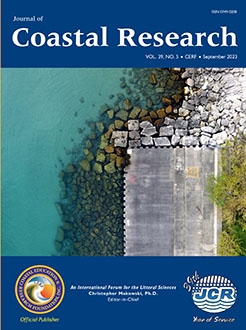Sravani, K.; Ganesan, P.; Balasundari, S.; Muralidharan, N.; Chrisolite, B., and Dhanapal, K., 2023. Effect of different drying methods on the nutritional, functional, and bioactive properties of Gracilaria edulis and Ulva lactuca. Journal of Coastal Research, 39(5), 940–948. Charlotte (North Carolina), ISSN 0749-0208.
Seaweeds are considered healthy foods because they are excellent sources of proteins, minerals, essential amino acids, and fatty acids; have a considerable number of bioactive compounds; and have comparatively low-calorie content. Therefore, the incorporation of seaweed as a functional food ingredient is gaining popularity. However, excessive moisture levels are becoming a limiting factor for shelf life, leading to the exploitation of a preservation technique such as drying. In the present investigation, Gracilaria edulis and Ulva lactuca were selected and analyzed in terms of nutritional, technofunctional, functional, and bioactive components and properties to check the impact of three drying methods. The proximate components, except for fat, are significantly (p < 0.05) affected by the drying method. Technofunctional properties, viz., the swelling, water-holding, and oil-holding capacities, of sun-dried U. lactuca and oven-dried G. edulis were significantly (p < 0.05) higher than those of other samples. The drying method was found to significantly (p < 0.05) affect total phenolic content, flavonoid content, and antioxidant activity. Escherichia coli is highly susceptible to methanolic extracts of samples, followed in level of susceptibility by Staphylococcus aureus, Bacillus subtilis, Bacillus cereus, and Pseudomonas aeruginosa. Although the drying method showed its effect on bioactive compounds, the seaweeds retained most bioactive properties, such as antioxidants, antimicrobials, and functional characteristics, proving that both U. lactuca and G. edulis can be employed as functional ingredients. Among the drying methods, sun-dried U. lactuca and shade-dried G. edulis had the greatest potential to be used as bioactive food ingredients.





